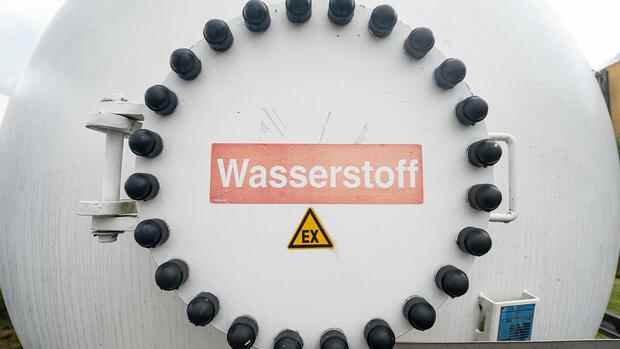Green hydrogen is considered the future of energy production.
(Photo: dpa)
Brussels Hydrogen is considered the miracle weapon of the energy transition: it can be used wherever gas is still burned today. Even the coal furnaces for steel production are to be replaced by hydrogen systems in the future.
However, the EU Commission is now linking the production of green hydrogen to criteria that some in the economy do not understand: the electricity must come from new plants and be produced at exactly the same hour as the hydrogen is produced. The hydrogen produced at that moment can only be described as “green” if a megawatt hour costs less than 20 euros. This is the first official draft for a delegated act that the EU Commission has now published.
However, such criteria are difficult to meet, criticizes the economy. And she warns: Under such conditions, it will take a long time before so much hydrogen is produced that entire industries can switch their energy sources.
For more than half a year, the companies have been waiting spellbound for the exact criteria to be presented. Now they have until June 17 to raise objections. The EU Parliament and EU member states can also suggest changes.
Top jobs of the day
Find the best jobs now and
be notified by email.
BDI General Manager Holger Loesch emphasizes that slowing down the production of green hydrogen increases the uncertainty for energy-intensive companies. “The industry absolutely needs the security that its supply is guaranteed when switching from gas or coal to climate-friendly fuels.”
RWE boss Markus Krebber also finds the delay unnecessary: ”With the current proposal, a good plan is slowed down by the specific regulation,” he says.
The German economy in particular has high hopes for hydrogen. It’s not just about being the first to produce large quantities of green steel. She is also interested in later selling the systems developed for this purpose worldwide. This also includes the electrolysers, which are used to produce hydrogen, and the direct reduction plants, in which steel is produced with this hydrogen.
>> Also read here: Wintershall is planning a major hydrogen production project in Wilhelmshaven
The quicker large amounts of hydrogen are available, the more the development will be pushed forward and the better the chances companies will have later. This is how Sebastian Bolay, energy expert at the DIHK, sees it: “The market for electrolysers can become very important worldwide. If German companies stay in the lead, that benefits the whole country and makes us more independent,” he says. “Right now, at the beginning, it doesn’t really matter where the hydrogen comes from. He just has to come quickly. But the EU Commission is slowing down with its legal act. Sooner or later companies will only ask for green hydrogen anyway.”
However, the Commission fears false incentives. Because it is often forgotten that hydrogen from conventional sources is more harmful to the environment than natural gas. “Hydrogen production could incentivize fossil fuel power generation, undermining the climate benefit of hydrogen and its role in strengthening energy security in the EU,” read a statement.
Climate protectors: Narrow specifications also have advantages
Matthias Buck from the organization Agora Energiewende says: “Simply wanting to produce as much electricity-based hydrogen as quickly as possible is not thinking enough.” System usefulness, for example, is important: “Electrolysers will be a relevant factor in the power grid. They must therefore be planned and operated in such a way that they support network operation. Otherwise existing bottlenecks in the power grid will be exacerbated.”
Overall, the definition presented by the EU Commission is now looser than some observers had expected. The CDU environmental politician Markus Pieper says: “The Commission literally got the curve away from hydrogen with a gold rim at the last second.”
>> Read here too: The EU wants to finally solve its energy problem by 2030
An important point here is a special rule for wind, solar and hydroelectric power plants that are already built or will start operating before 2027. Double funding is possible for them: first their construction will be subsidized, later there will be subsidies for the hydrogen produced with their help. This should no longer be possible for power plants that will be connected to the grid after 2028.
In addition, Pieper calls for different rules for the use of conventional energy sources: “In the event of a lull in the wind or the sun, it is still far too complicated to obtain back-up power from the general power grid. The Commission still has to resolve this bottleneck through simplified verification procedures and acceptance for energy from nuclear power or gas for hydrogen production.”
Climate protector Buck, on the other hand, points out that a narrow definition can also have advantages for the economy: “Only a robust definition of green hydrogen guarantees that steel produced in Germany that is ‘climate-neutral’ really comes with no greenhouse gas emissions. ‘Climate neutrality’ is an important differentiator in future green markets.”
More: Corporations and the EU Commission present a declaration of intent on the hydrogen ramp-up
